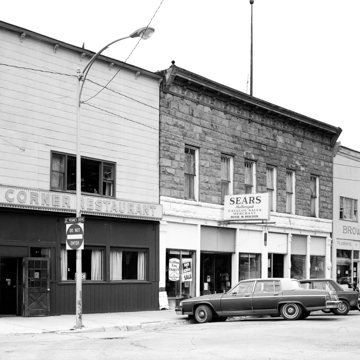James Cash Penney’s Golden Rule Store in Kemmerer, which became known as the J.C. Penney “Mother Store” after Penney incorporated under his own name in 1913, was housed in three different buildings from 1902 until the present. The original 1902 store, a frame building with a second floor where Penney and his wife resided, was soon outgrown, and in 1904 the store moved into the west half of a two-story, rectangular stone building on Main Street, built circa 1897. The building, which faces northwest onto Kemmerer’s unusual town triangle (as opposed to town square), consists of two storefronts with recessed entrances and storefront windows. The original cast-iron storefront has been encased in concrete. The upper story is rough-cut stone pierced by one-over-one, double-hung windows, and topped with a pressed metal cornice. The J.C. Penney Store occupied this building until 1935, when it moved to its current location across the town triangle. As of 2018, the building houses a restaurant.
References
Christian, Ralph J., “J.C. Penney Historic District,” Lincoln County, Wyoming. National Register of Historic Places Inventory–Nomination Form, 1977. National Park Service, U.S. Department of the Interior, Washington, D.C.
Curry, Mary Elizabeth. “J.C. Penney.” American National Biography. Vol. 17. New York: Oxford University Press, 1997.














